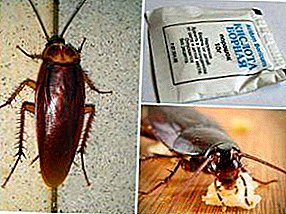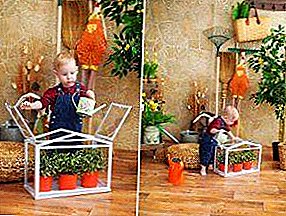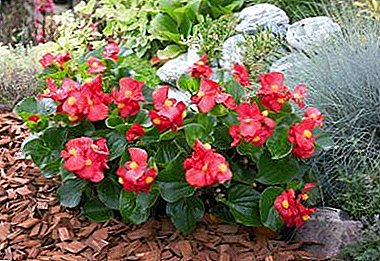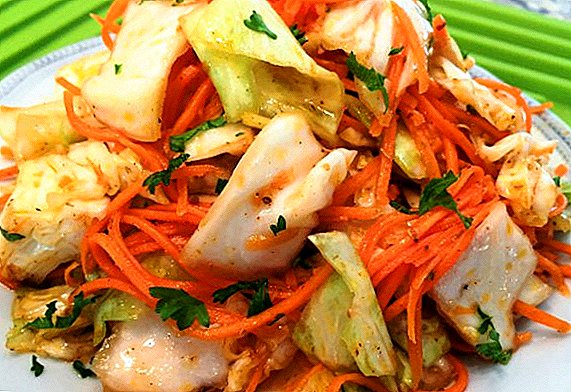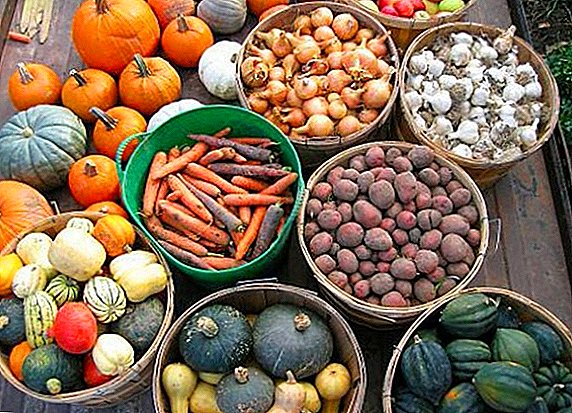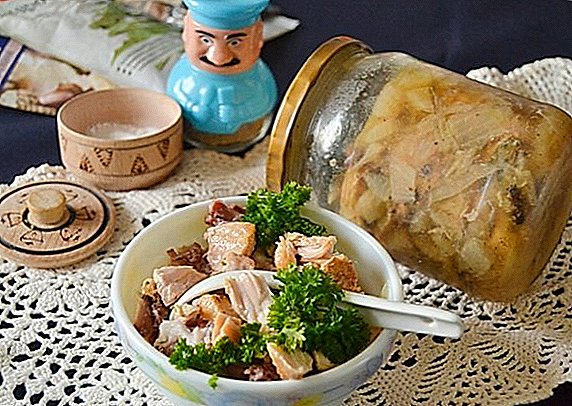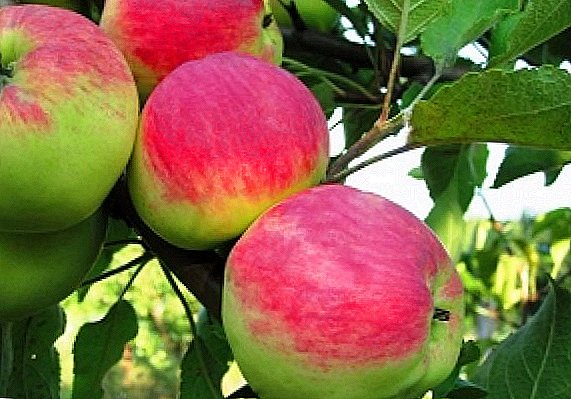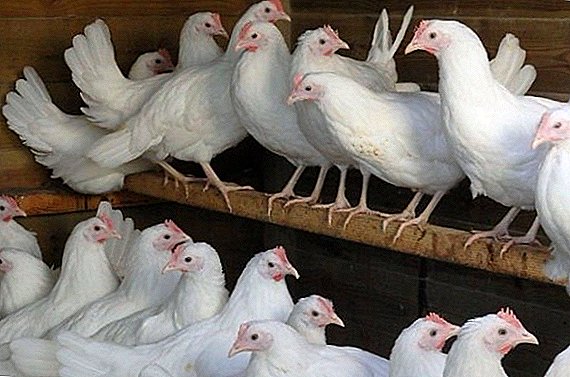 The choice of the type of chickens for breeding often causes many doubts and takes enough time, but in order to accurately determine the choice, it is necessary to familiarize yourself with the rules and indicators of each individual species. If the choice is on leggorn white hens, then you need to know the features of appearance, behavior, feeding and the necessary conditions for them.
The choice of the type of chickens for breeding often causes many doubts and takes enough time, but in order to accurately determine the choice, it is necessary to familiarize yourself with the rules and indicators of each individual species. If the choice is on leggorn white hens, then you need to know the features of appearance, behavior, feeding and the necessary conditions for them.
Breed history
This breed became known in the XIX century, as it was and still remains one of the most highly productive species. The history of breeding began in Italy.  The name of the breed is associated with the English port of Livorno. In the second half of the XIX century, they began to be imported into the United States, where they crossed with other species to breed even more productive chickens. These were Japanese ornamental species (phoenix, yokohama), warriors, white minoras, as well as Spanish chickens.
The name of the breed is associated with the English port of Livorno. In the second half of the XIX century, they began to be imported into the United States, where they crossed with other species to breed even more productive chickens. These were Japanese ornamental species (phoenix, yokohama), warriors, white minoras, as well as Spanish chickens.
Did you know? The first chickens were domesticated in Ethiopia more than 3,000 years ago!
Once in these countries, the breed has become very popular, it spread throughout Europe and came to England. They came to the territory of the USSR at the beginning of the 20th century, they were grown both in pure form and carried out selection in order to create their own species based on this. 
Description and Features
Each breed has its own characteristics of appearance, which distinguish them from others. They are based on physical indicators that are important for growing and breeding.
Chickens of the leggorn breed participated in the breeding of many breeds and crosses, such as legbar, Borkovskaya barvistaya, rhodonite, broken white, highsex, iza brown.
External features
Most often, the external characteristics of these chickens include:
- small size relative to other breeds;
- average foot length;
- straight back shape;
- trunk in the form of a curved blade;
- long torso length;
- wide back;
- rounded chest;
- medium sized head;
- dense plumage;
- yellow or bluish earlobes;
- leaf crest in roosters;
- a big long tail of a rooster and a small tail of hens.
External features may vary depending on the species from which a particular individual was bred. 
Temperament
Leghorn is one of the most active types of chickenstherefore it is recommended to settle them in a barn with the possibility of walking. Often the choice of such a structure is not a very economical option, but due to the small size of the bird the building will not be very expensive. They are very demanding, so their place of residence must be well maintained and clean. There must be enough space, a large influx of air and a lot of light, otherwise chickens will not produce the desired number of eggs.
Important! Under bad conditions, the hens will not give the desired result and can fight among themselves.
In general, their character is quite friendly, since it is very rare to see chickens attacking each other or increasing hostility in a group. Very calm, if you keep them in good conditions and monitor their nutrition.
Read also about building a paddock for your own chickens.
Hatching instinct
A feature of this breed is that in chickens there is almost no nestling instinct.  That is, they lay eggs, but in order for chickens to appear, it is necessary either to keep chickens of other species to incubate eggs, or to buy young birds. Another way is an incubator.
That is, they lay eggs, but in order for chickens to appear, it is necessary either to keep chickens of other species to incubate eggs, or to buy young birds. Another way is an incubator.
Did you know? The color of the egg shell is not related to the quality of the egg itself.
After hatching, chickens are distinguished by their special endurance and resistance to external stimuli, but one should not forget that they require full care and feeding.
Productivity
This breed has good physical characteristics and high productivity:
- weight: rooster - from 2.2 kg to 2.7 kg, chicken - from 1.5 kg to 2 kg;
- number of eggs per year: 160-230 pieces;
- egg weight: 40-60 g;
- the beginning of the egg laying period: the 17-18th week of life.
That is, we can see that productivity indicators are at a high level. 
What to feed
A particularly important part of the life and productivity of any species of hens is nutrition, since egg production, the size of the young and the health of the hens depend on it. Due to the small size of the individuals, they do not require a large amount of food, but the main condition for any age is the quality of nutrition and regularity. This type is unpretentious, they do not require special additives or vitamin mixtures.
Chickens
Chicks can provide these types of products:
- boiled eggs;
- corn;
- wheat bran;
- various greens.
Over time, it is necessary to gradually add other foods to feed the adult. 
Adult chickens
The diet of adult chickens includes:
- variety of grain crops;
- corn;
- greenery;
- feed;
- root vegetable;
- grass and straw;
- vegetables.
For layers, if desired, additives can be added to increase productivity, but this is not necessary.
Learn how to make feed for laying hens at home and what vitamins are needed for egg production.
Conditions of detention
The conditions in which the birds will live are very important, their egg production, behavior and health will depend on it. 
Coop Requirements
First of all, the chicken coop should be cleaned regularly, since this species is quite clean, and a dirty room entails the multiplication of many diseases. Also, the room should be quiet, because stress can greatly reduce the level of productivity. The size of the chicken coop should be determined on the basis of the calculation of 1 square meter for 5-6 hens.
Important! An irregular cleaning of the hen house can trigger an epidemic, as a result of which the birds may die.
It is desirable to make a roost from a natural tree, counting on 15-20 cm on chicken. The nest is made of a wooden box filled with straw. The floor is covered with fine wood or hay. In the cold season it is recommended to keep the temperature at 15 degrees Celsius, in the warm season - if possible up to 25 degrees Celsius. 
Walking yard
The walking yard can be of different sizes depending on the possibilities. A little space will be enough, the main condition is that the fence from the grid must be more than one and a half meters in height. This is due to the fact that at a lower fence chickens can fly through it. The grid should be with sufficient width of the rods.
Familiarize yourself with tips on making and setting up a chicken coop: how to make heating, ventilation, lighting, water trough, feeding trough.
How to endure winter cold
In severe cold not recommended to let chickens out for a walkbecause it can negatively affect their health. Therefore, in the chicken coop it is important to place the compartments with small gravel, which chickens usually found on the street, they need it in order to grind food into the desired state.
Is it possible to breed in a cage
Dilution in cages is allowed, but only if it is of sufficient size. One of the indicators of this is that the chicken can stick its head between the rods freely. Another condition - the cell must be at a small inclination. Outside the cage, it is necessary to arrange the installation for receiving eggs. 
Advantages and disadvantages
The positive qualities of this type include:
- high egg production;
- calm character;
- resilience;
- take up little space;
- not picky in food;
- early period of laying eggs.
Negative traits:
- hens of this breed do not hatch eggs;
- the number of eggs decreases after a year.
Video: Leggorn Breed
Poultry farmers reviews of the Leghorn breed


We can conclude that the white leggorn hens have both advantages and disadvantages. With the right care and conditions, they will show high egg production, but do not forget about their features, such as the absence of a hatching instinct.



